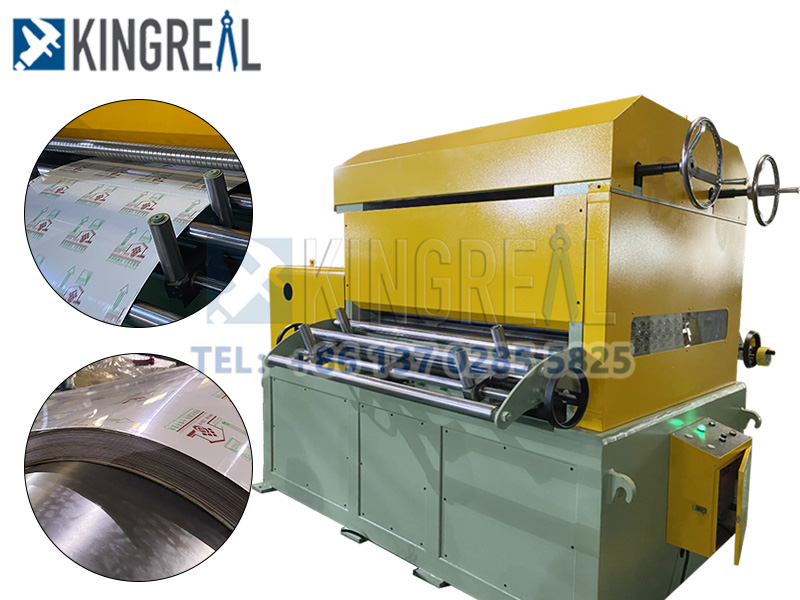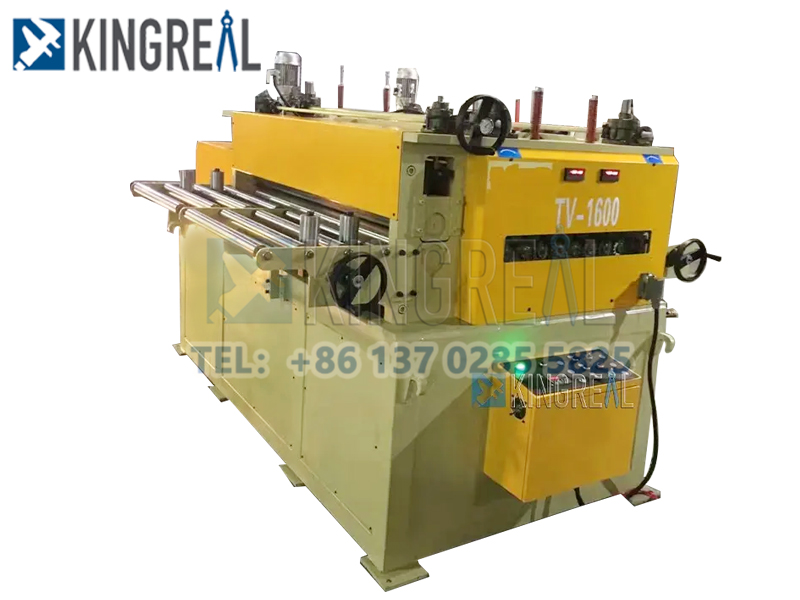What is a coil straightener?
What is a coil straightener?
The coil straightener is also called a metal straightening machine, a coil leveler machine, a sheet metal leveling machine, a steel flattening machine. Coil straightener is suitable for leveling various cold and hot rolled coil. Due to its convenient and simple operation, it is widely used in many industries such as machinery, metallurgy, building materials, chemicals, electronics, electricity, and light industry, especially in shipbuilding, locomotives, boilers, bridges, metal structure factories, etc., and has become an indispensable product in production.
Under large elastic-plastic bending conditions of metal coil materials, no matter how different the original bending degrees are, the difference in the remaining bending degrees after rebound will be significantly reduced, and even tend to be the same. As the degree of repeated bending decreases, the residual bending after rebound will inevitably approach zero to achieve the purpose of correction. The roller-type steel plate leveler is mainly used to straighten plates of various specifications. It uses the "Bauschinger effect" of the material to repeatedly bend the plate multiple times, gradually reducing the bending deflection, and gradually turning multiple original curvatures into a single curvature. And finally it is leveled to achieve the flattening accuracy required by the process.


Structure and working principle
The coil straightener is provided with an upper die and a lower die, wherein the upper die is fixedly connected to the push rod of the hydraulic cylinder, the cylinder body of the hydraulic cylinder is fixed to the support frame, and an independent cooling water circuit is provided in each of the upper die and the lower die, and the outlet and the inlet of the cooling water circuit are respectively located on the upper die or the lower die. The radius or center distance ratio of at least the first five rollers starting from the entrance of the coil straightener is the same as that of the traditional coil leveler machine, and the radius or center distance ratio of at least the last five rollers starting from the entrance of the coil leveler machine is similar to that of the curling elimination machine, and advantageously, the center distance between the middle rollers of the coil straightener is increased. It can avoid the erosion of impurities on the tool or the tool blank during rapid quenching and cooling, thereby ensuring the quality of the surface and hardness metallographic structure of the tool or the tool blank, and avoiding the pollution of the cooling oil.
The specific configuration of the coil leveler machine can be determined according to customer requirements, including the number and weight of coil leveler machine rollers, generally double-weight 7, 9, 11, 13 rollers, quadruple-weight 11, 13, 15, 17, 19 rollers, and hexagonal 17, 19 rollers.
The rollers of the coil straightener are made of wear-resistant forged steel. Depending on the width of the machine, each leveling roller is supported in its length by one or more sets of rollers, which can minimize the diameter of the leveling rollers and reduce the spacing between the rollers. The rollers can be adjusted vertically individually so that they always support the full load. The roller surface has a standard processing finish, but for machines that level aluminum plates, the roller surface is ground and polished. In addition, there are spiral grooves on the rollers to collect foreign dust particles. The leveling rollers are equipped with scrapers to scrape off impurities adhering to the rollers. The scraped impurities are sent to the front of the coil straightener through the grooves for collection and removal.


Scope of application
The coil leveler machine is suitable for cold and hot plates, galvanized plates, aluminum plates, color-coated plates, stainless steel plates and other metal plates.
How to debug the coil straightener
1.First, make preparations for the preliminary adjustment of the coil leveler machine, connect the power supply of the coil leveler machine, turn on the leveler, and press forward and reverse in manual mode to test whether the leveler is operating normally.
2.Adjust the spring hand wheel of the coil straightener to the range where the material can be placed, cut the material roll to about one meter long for debugging and leveling, and prepare to feed the cut material into the coil leveler machine for trial leveling.
3.Feed the cut materials into the feed port of the coil leveler machine, and then use manual forward rotation to feed the materials out until the materials slowly pass through the leveling machine and come out of the discharge port.
4.Adjust the hand wheels of the coil leveler machine evenly downward to press the material (there are scales on both sides of the machine head for reference) until the material is stressed and cannot be easily pulled.

5.Press the inching button on the electric control box to rotate forward to allow the remaining material to pass through the coil straightener. If the curvature of the material after passing through the leveler is opposite to the curvature before leveling, it means that the leveling handwheel is pressed down too much and the handwheel needs to be fine-tuned upward appropriately.
6.After adjusting the hand wheel for fine adjustment, reverse the material and return it, then press the forward rotation to level the material again. If the curvature of the material after the trial adjustment is still in the same direction as the original curvature, but the curvature is much smaller, it means that the hand wheel is adjusted too much upward and needs to be fine-tuned downward appropriately.
7. During the leveling correction process, the material deflects to one side. This is caused by the inconsistent pressure at both ends of the coil straightener roller. The leveling handle should be adjusted appropriately to make the leveling roller on the side where the material deviates slightly upward to reduce the friction with the material and make the pressure consistent.








 +86-137 0285 5825
+86-137 0285 5825  sales@kingreal.org
sales@kingreal.org jet-clima
jet-clima